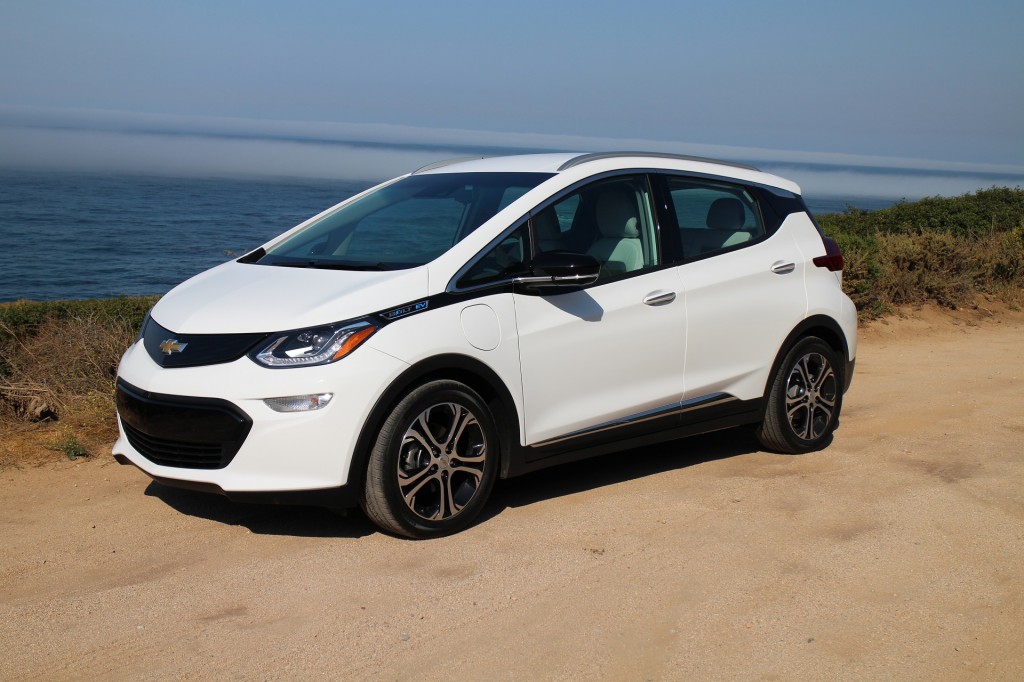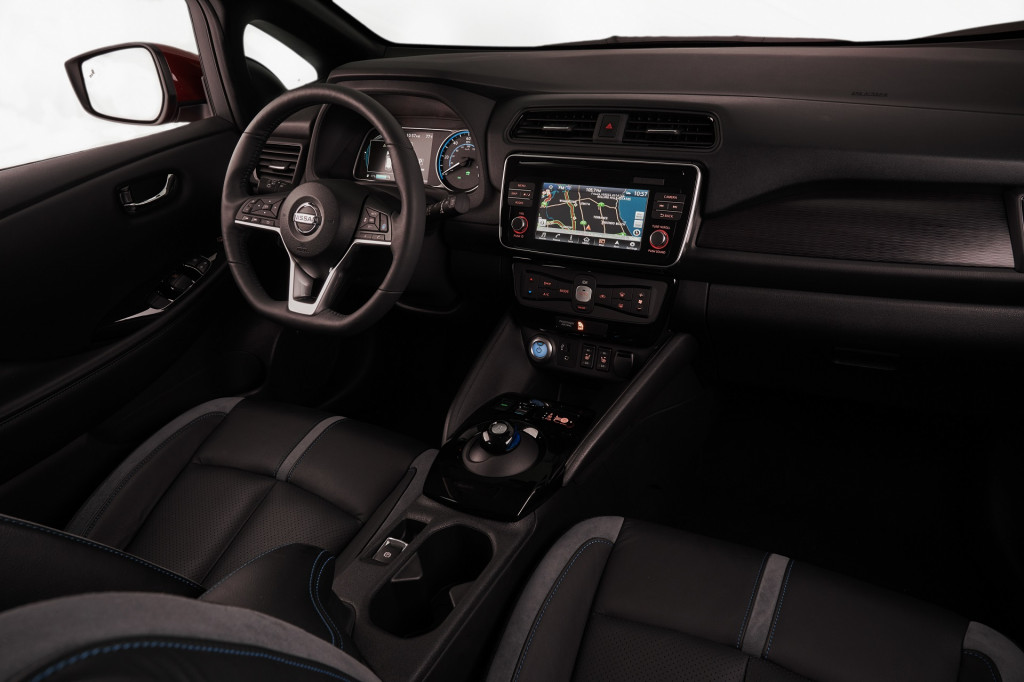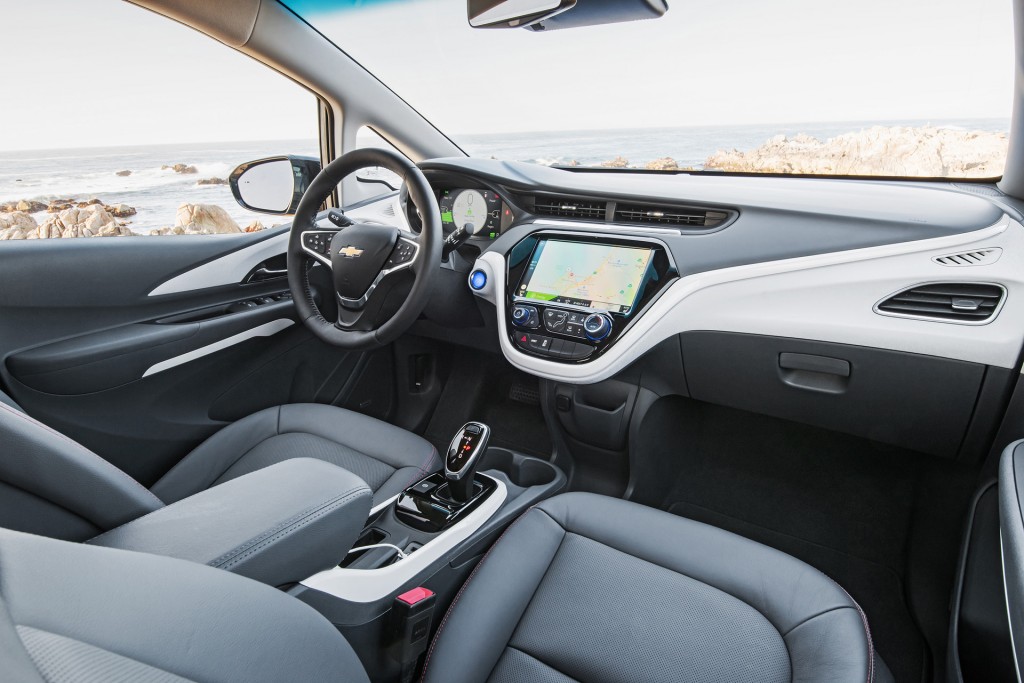The 2017 Chevy Bolt EV went on sale last December, but only became available nationwide in August.
Meanwhile, electric-car shoppers waited eagerly for details of the 2018 Nissan Leaf, the second-generation car that finally premiered in early September.
We've now driven both cars, and can take a high-level look at how they stack up against each other.
CHECK OUT: 2018 Nissan Leaf review and 2017 Chevrolet Bolt EV review
PRICE and RANGE
The two cars contrast most vividly in price and range ratings, with the Bolt EV's 60-kilowatt-hour battery giving it 238 miles of range, 60 percent more than the Leaf's projected 150 miles from a 40-kwh pack.
But the cost for that extra range is almost $7,000: the 2018 Leaf starts at $30,875, while this year's Bolt EV is priced at $37,500. Both prices include mandatory delivery fees, and various manufacturer incentives are likely available.

2017 Chevrolet Bolt EV, road test, California coastline, Sep 2016
Nissan suggests a starting price just over $30,000 will let far more buyers consider the new Leaf than the costlier Chevy, and it expects Leaf sales to double globally as a result.
Next year, by the way, the company will launch a version of the 2019 Nissan Leaf that offers a larger 60-kwh battery, more power, and a higher price that will compete straight across with the Bolt EV.
DESIGN
Both cars are five-door hatchbacks that, in silhouette, have more in common than you'd expect.
While four-door sedans would likely be slightly more aerodynamic, so-called C-segment hatchbacks are the world's most common vehicle segment, despite their lack of popularity in the U.S. market.

2018 Nissan Leaf

2017 Chevrolet Bolt EV

2017 Chevrolet Bolt EV, road test, California coastline, Sep 2016

2018 Nissan Leaf
We admit we're somewhat used to the Bolt EV's looks by now, so the Leaf feels fresher. Its lines are a touch more exaggerated than the Bolt's, but neither car looks strange or bulbous, as the first-generation Leaf did.
Inside, the 2018 Leaf interior conveys the message that this is a mass-market car, while the Bolt EV has considerably a more advanced touchscreen interface.
The Bolt EV front seats, however, have come in for their share of criticism for being too narrow and thin, so you should test them yourself if you're thinking of buying.
READ THIS: 2018 Nissan Leaf electric-car prototype driven: first impressions
PERFORMANCE and DRIVING FEEL
Both cars are what you'd expect on the road, though the 150-kilowatt (200-horsepower) Bolt EV is more powerful than the 110-kw (147-hp) Leaf, making it quicker, which a driver can feel.
Each now offers one-pedal driving, with the Leaf's a bit softer and more gentle in its transitions than the Bolt EV—although the Chevy offers a "regen paddle" drivers can use to slow the car when it's in its default mode, a feature Nissan hasn't provided.
With battery weight under the floor, each car feels stable and planted, but we give the nod to the Bolt EV's steering feel. The Leaf remains a little numb in comparison, though it's less appliance-like than its predecessor in that respect.

2018 Nissan Leaf ProPilot Assist
FEATURES
You can look through the reviews linked above for a full listing of features in each car, but a couple of points stand out.
The Bolt EV inexplicably doesn't offer adaptive cruise control; engineers told us its fast development cycle simply precluded that, so we'd expect it to show up down the line.
The Leaf, on the other hand, has three different types of cruise control, the top level being Nissan's ProPilot Assist, which adds active lane control to adaptive cruise, providing it with what's defined as Level 2 autonomy.
Both offer Android Auto and Apple CarPlay, but a conventional navigation system remains an option in the Leaf, whereas the Bolt EV offers navigation solely through a connected smartphone.
DON'T MISS: 2018 Nissan Leaf: does 150 miles pioneer the 'mid-range' electric car?
CHARGING NETWORKS
All Leafs except the base S model have a 6.6-kilowatt onboard charger, while the Bolt is 7.2 kw. Both use the standard plug, but their DC fast-charging options differ.
The 2018 Leaf continues with the 50-kw CHAdeMO system used in Japan, while the Bolt EV offers a 50-kw Combined Charging System port.
While CCS stations were considerably sparser than CHAdeMO sites in earlier years, the gap is closing fast and most public fast-charging sites now offer both.
_______________________________________













